Protecting our vines
We created a range of Wine Tourism Biosecurity Signs in 2017 to help wineries educate visitors about farm-gate hygiene. Since then, hundreds of signs have been purchased by companies around Australia.
Click here for downloadable poster versions of these signs.
This page celebrates some of those Biosecurity Supporters, who are passionate about keeping their vines healthy.
Little Alfies
McLaren Vale Grape, Wine & Tourism
Pecador Vineyards
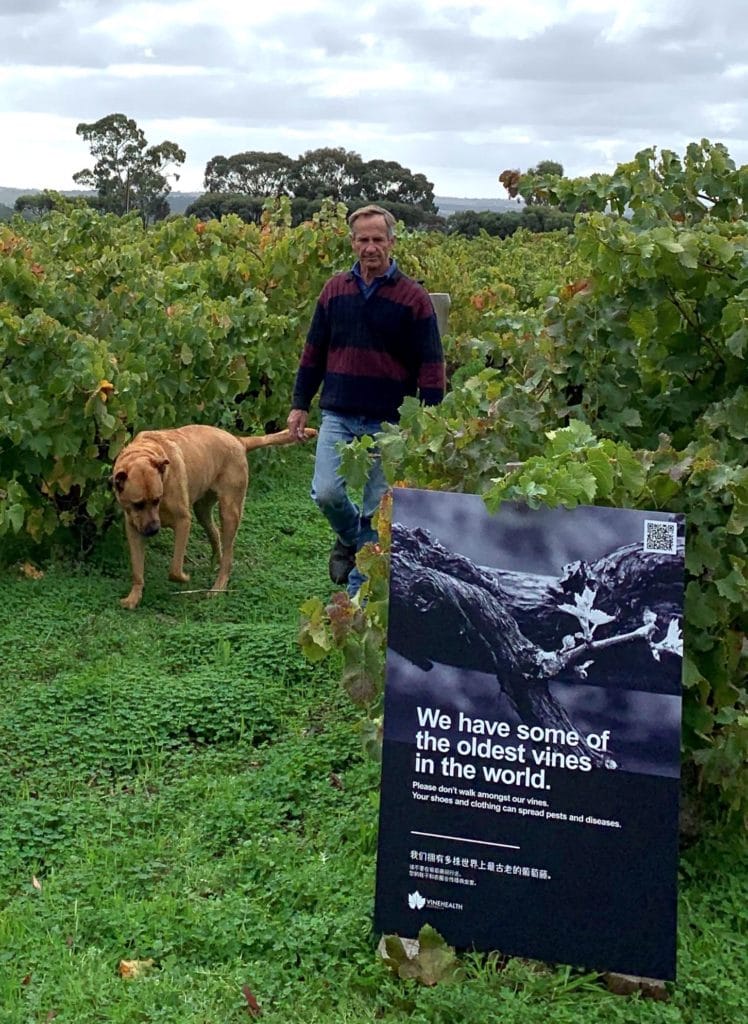
“Our old vines are precious to us. They only produce small crops but the flavour is amazing. Part of the reason for their longevity and quality is that they’re growing without rootstocks. It only takes one phylloxera bug to start an infestation that would see the end of these vines and all others like them, so biosecurity is very important to us.”
Drew and Rae Noon, Noon Winery, McLaren Vale
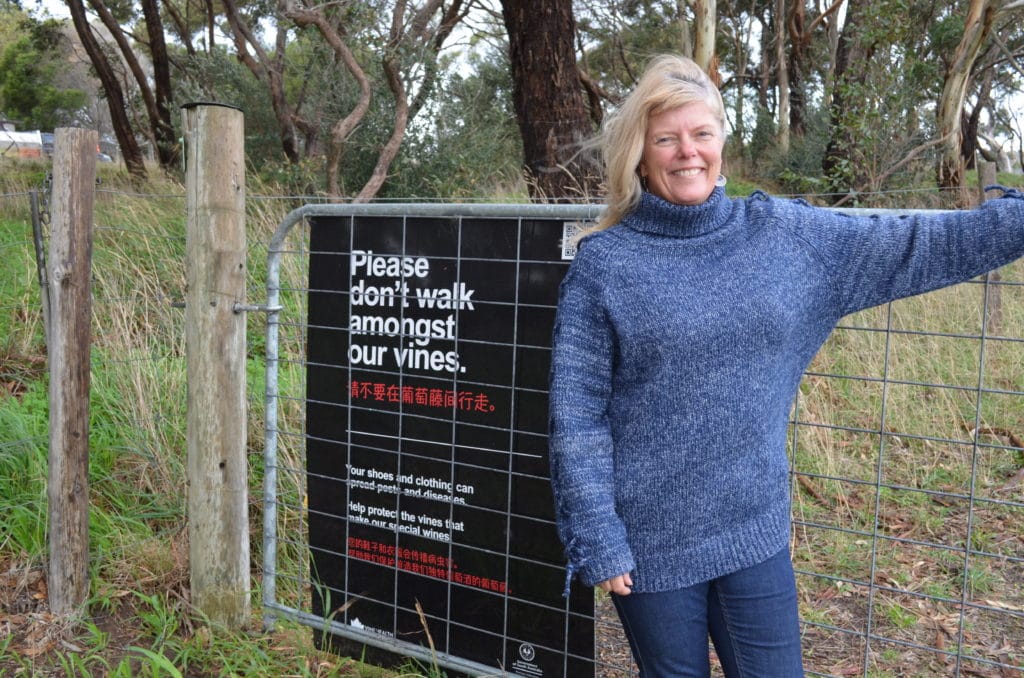
“Signage is an important tool in educating visitors not to enter our vineyards and risk our highly prized phylloxera free status here in South Australia.”
Melissa Brown, Gemtree Wines, McLaren Vale
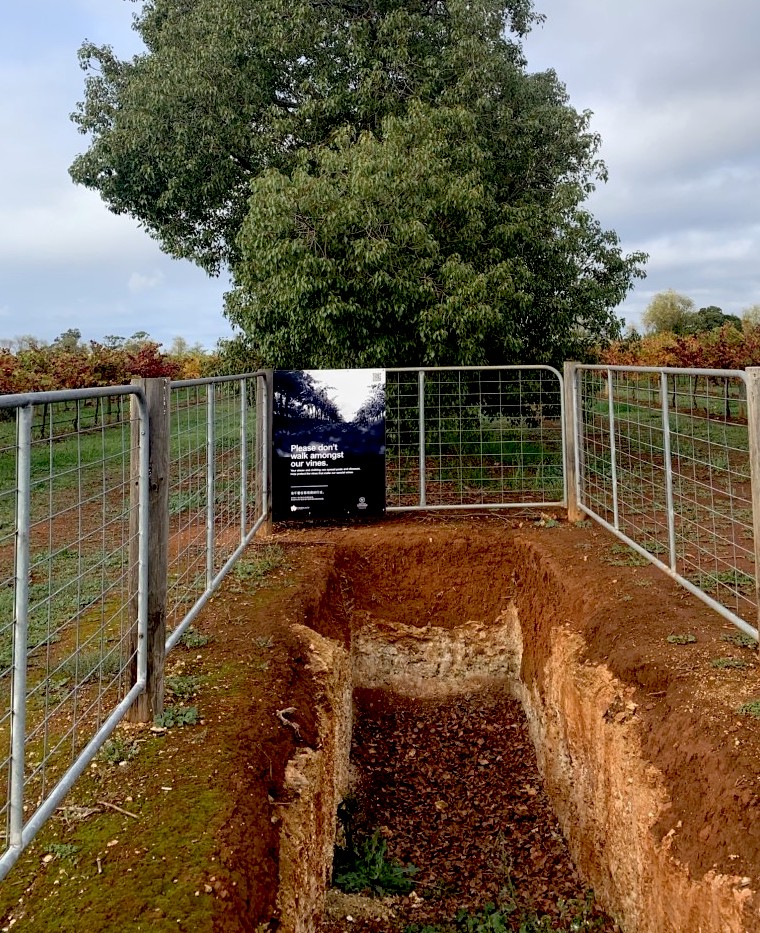
“We placed our signs near our popular soil pit display. This way, many visitors see the signage and are educated not to enter the vineyards. We also have a biosecurity sticker at the front entrance to our cellar door, near the door handle so that it’s eye-catching. And we educate our staff so that when customers ask about biosecurity, we can answer.”
Kirsty Balnaves, Balnaves of Coonawarra
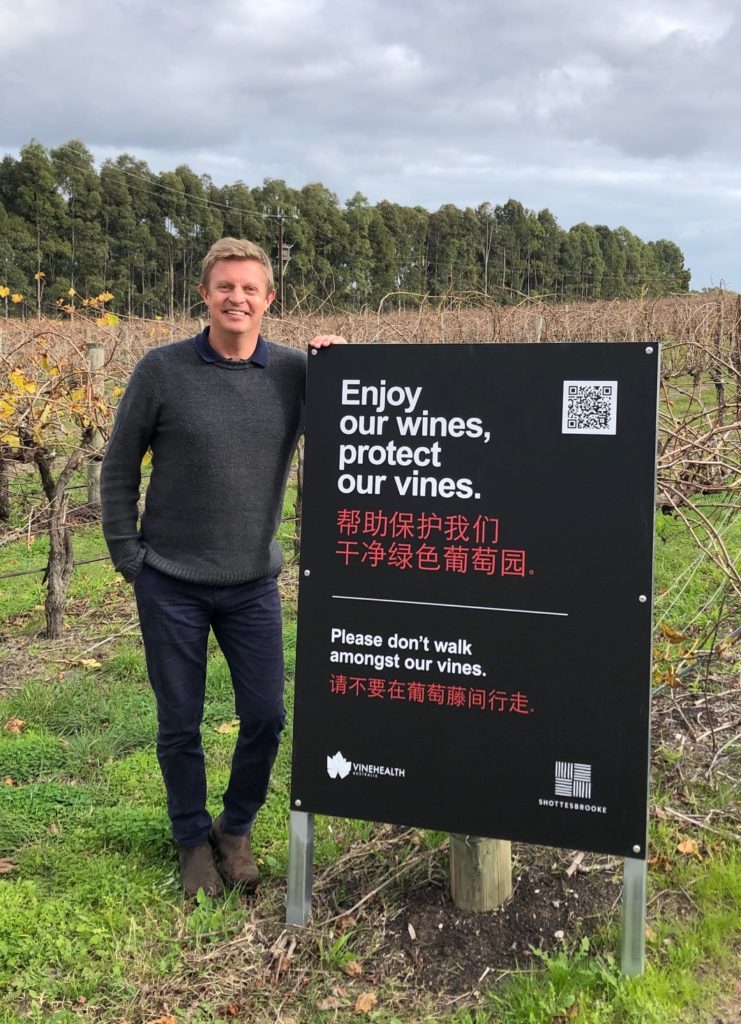
“As McLaren Vale attracts more and more interstate and overseas visitors, it’s important that the locals are able to clearly educate our guests about the importance of staying out of our vineyards. As a business with multiple sites, we have spread our signage around to be able to capture guests’ attention whether visiting our tasting room, restaurant or staying in our rental properties. Our in-house training means all staff (not just visitor focussed) are armed with the knowledge to be able to educate and explain the importance of not spreading phylloxera to our region.”
Hamish Maguire, Managing Director & Winemaker of Shottesbrooke Vineyards, McLaren Vale.
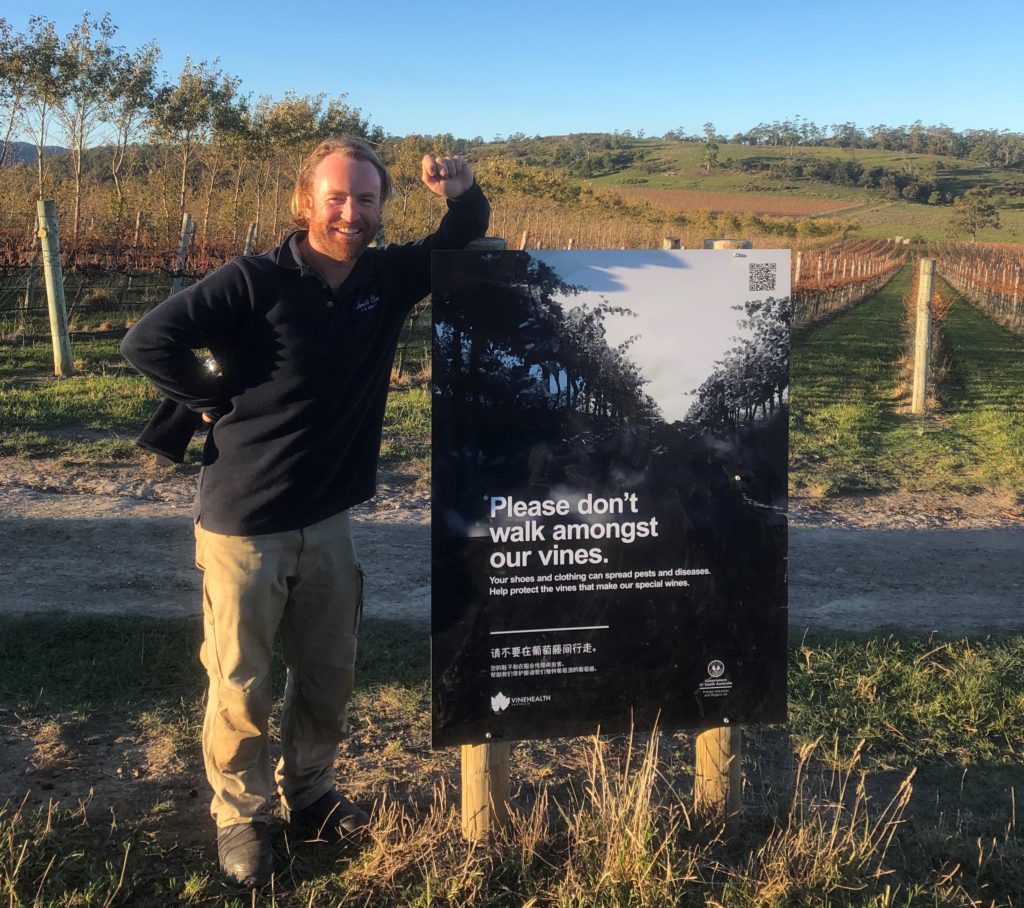
“We’re seeing greater and greater numbers of tourists, both local and international, visiting our Tasmanian cellar doors. It’s great to have consumer facing signage that not only educates visitors about the importance of biosecurity, but is also tasteful and less hard-edged than a standard ‘Do Not Enter’ sign.”
Nick Cooper, Assistant Vineyard Manager at Devil’s Corner, Tasmania.
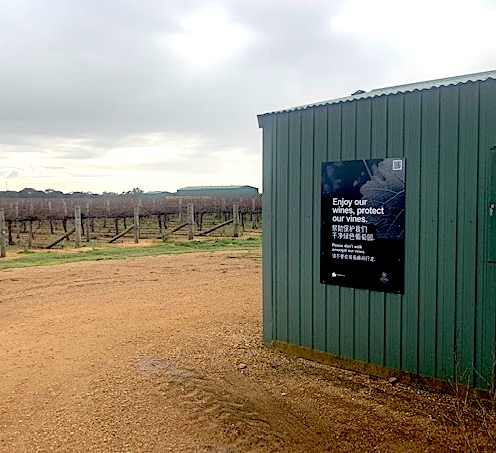
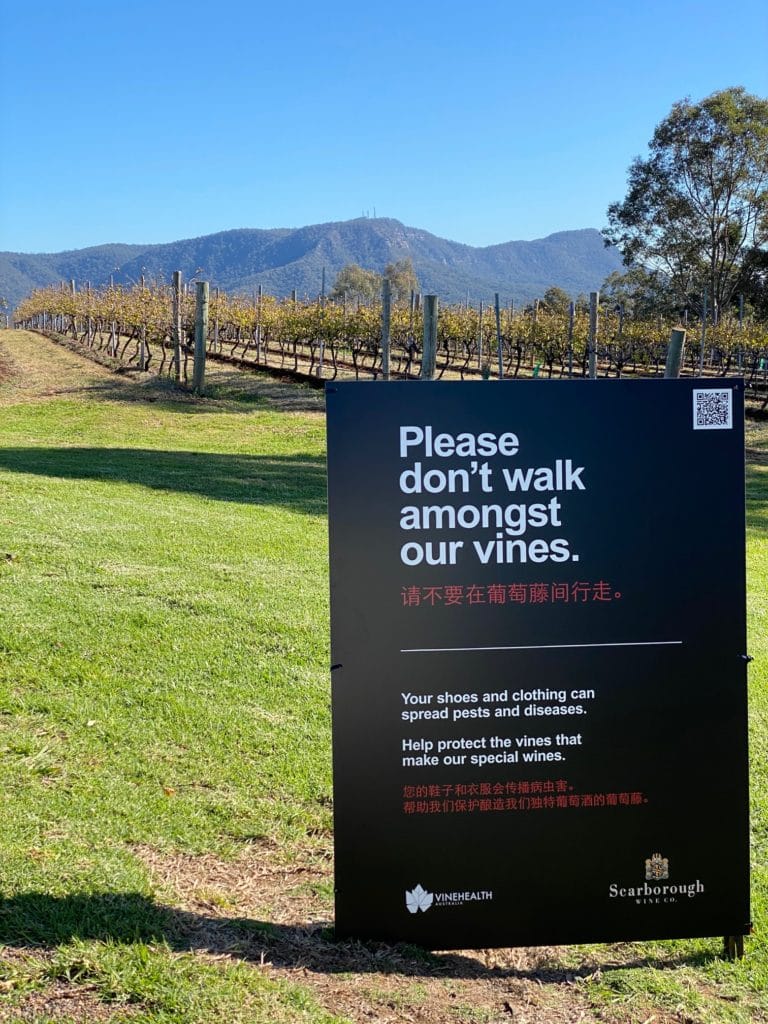
“Biosecurity is a cornerstone of business viability for Australian viticulture – both going forwards as well as to protect our unique heritage germplasm. It can be a challenge to push past the ‘inconvenience’ of compliance but you have to keep a focus on the long game; for me that means creating biosecurity bubbles and maintaining cleanliness as I move between properties.”
Liz Riley, Vitibit, NSW
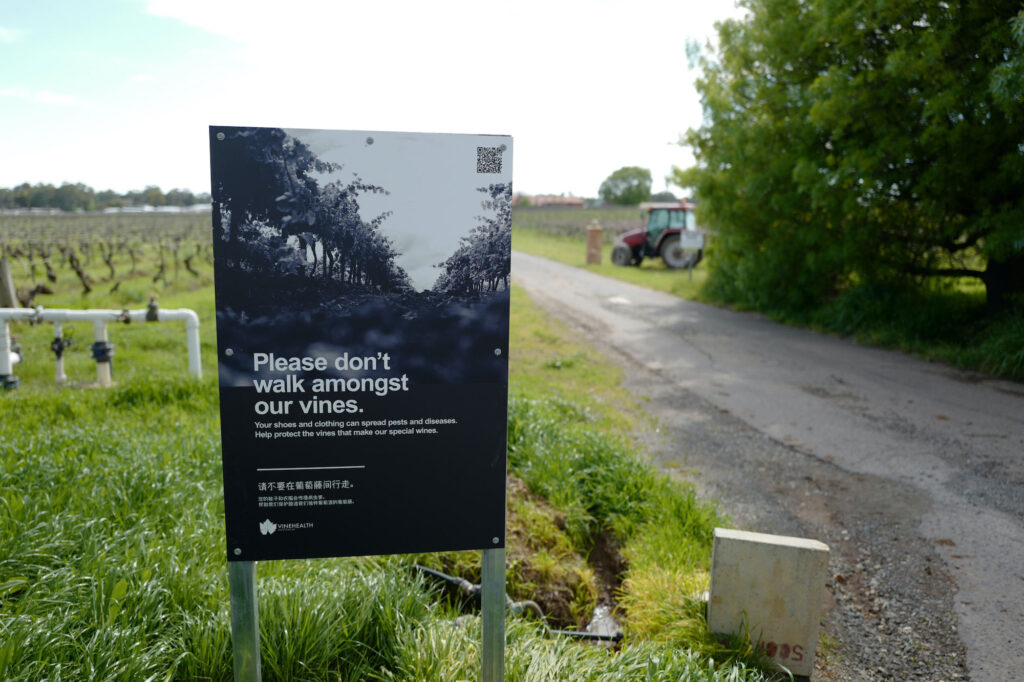
“Our site is in a unique spot right on the main street. This makes us a high traffic area, so it is essential we start to educate the public about the risk of wandering down vineyard rows so our vines can survive into the next generation’s custodianship.”
Conrad Pohlinger, Viticulturist, Elderton, Barossa Valley
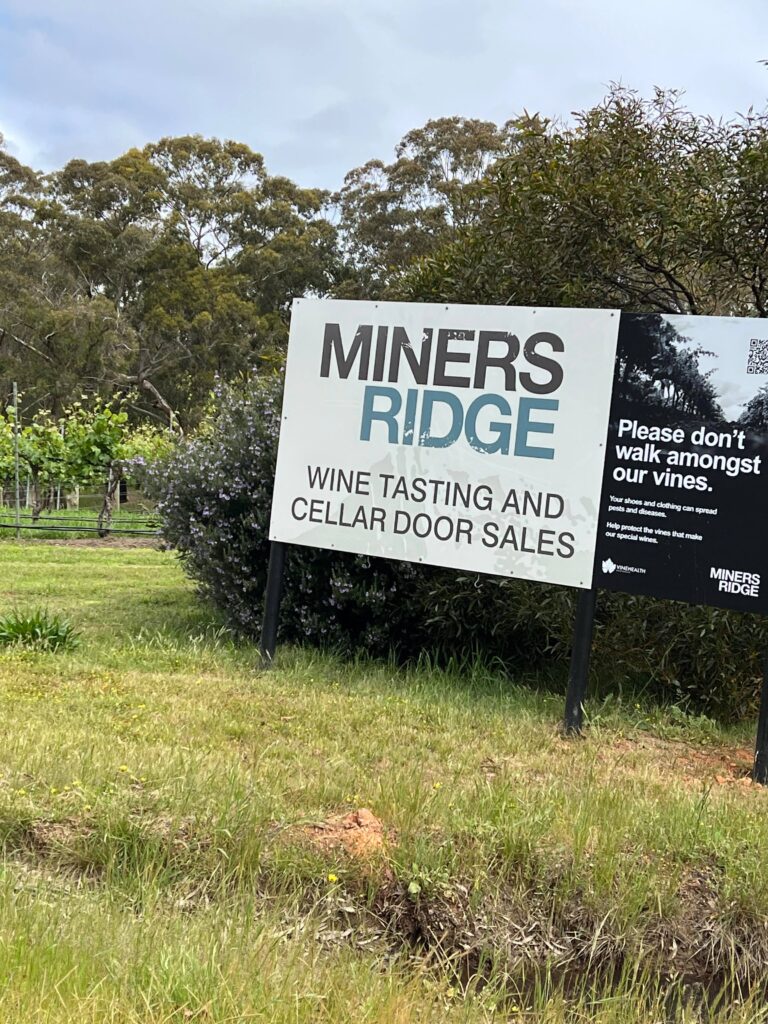
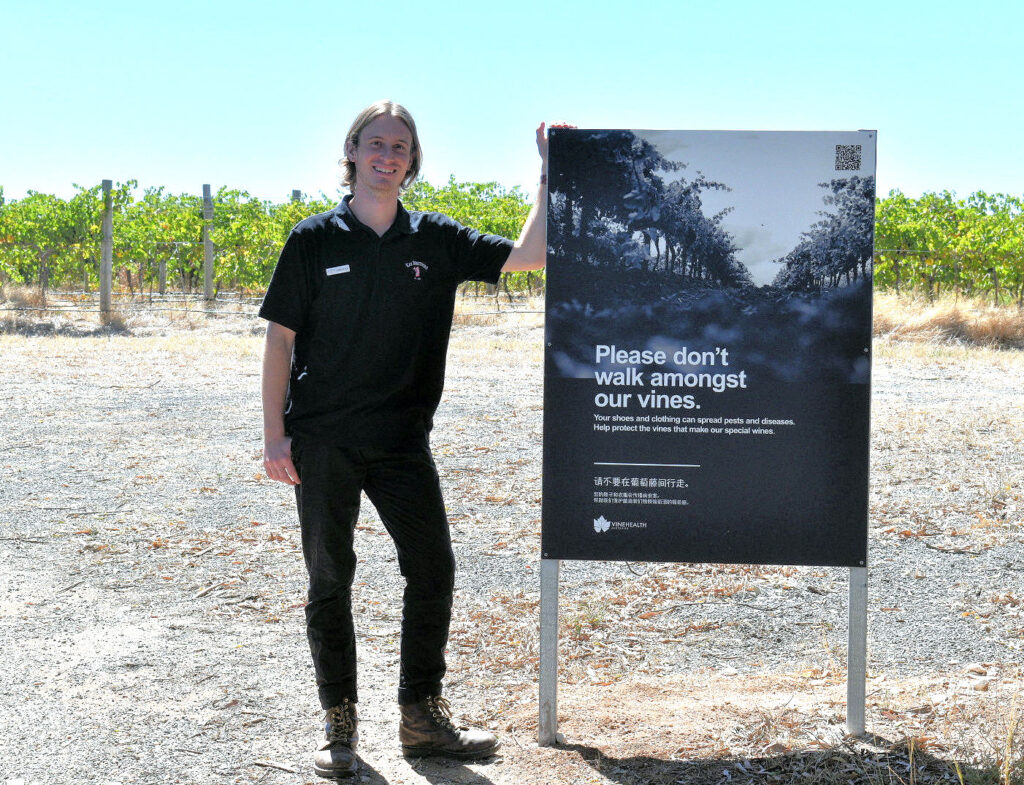
“Being the custodians of some of the oldest vines in McLaren Vale, planted in 1892, biosecurity is extremely important to the Kay Brothers team. Preservation is important not only for future generations, but the region too.
Sebastian (pictured) is one of the younger generation team members of our friendly cellar door staff who has the opportunity to share our history with the public, thanks to a wider awareness of biosecurity protocols.”
Warwick Oakley, Vineyard Supervisor, Kay Brothers, McLaren Vale

“Hahndorf is one of the most visited towns in Australia, with people coming from all over the world, so I like that the signs include messages in English and Mandarin. We’ve seen people stopping, reading and not going any further. Educating people about biosecurity is part of our social responsibility for our winery, our region and our state, to keep phylloxera out.”
Dee Wright, Cellar Door Manager, Hahndorf Hill, Adelaide Hills
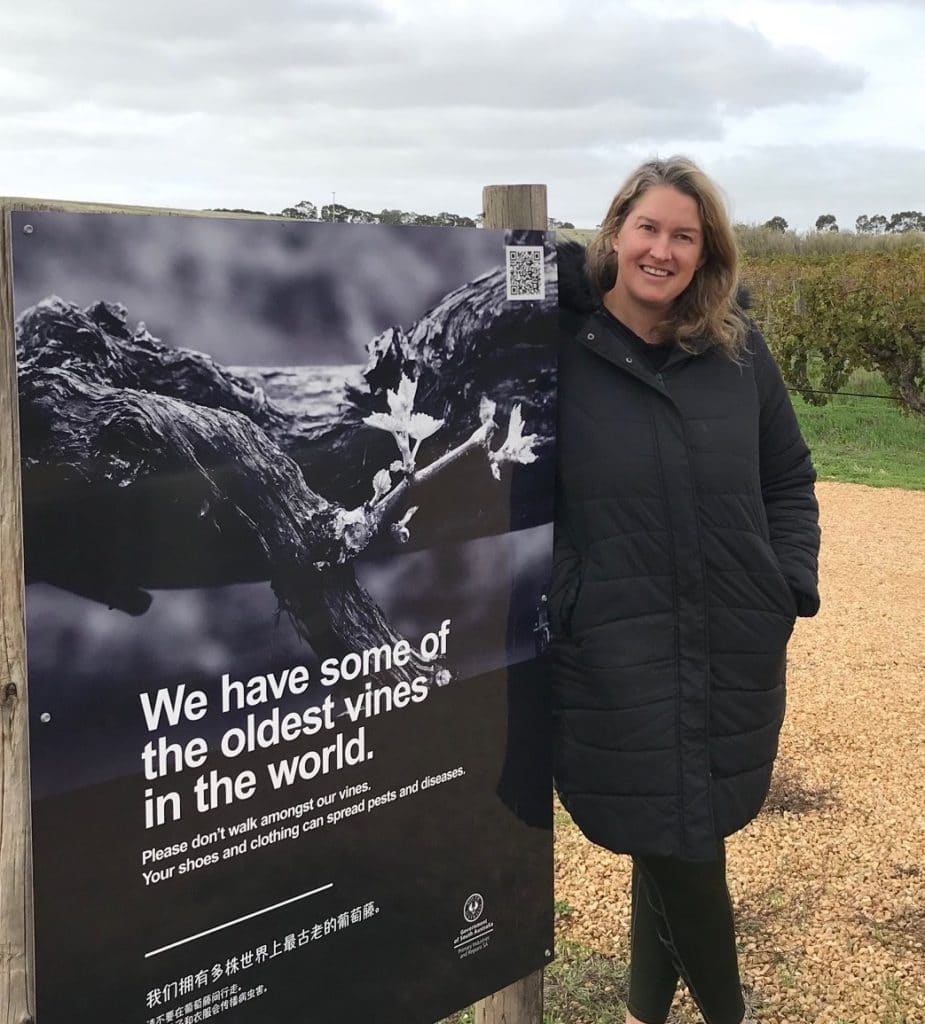
“Hayes Family Wines is an old vine certified organic vineyard. With our winery and cellar door onsite, the signs are invaluable for keeping our customers informed on good practice in and around our ancient grape sources.”
Brett Hayes, Proprietor, Hayes Family Wines, Barossa Valley
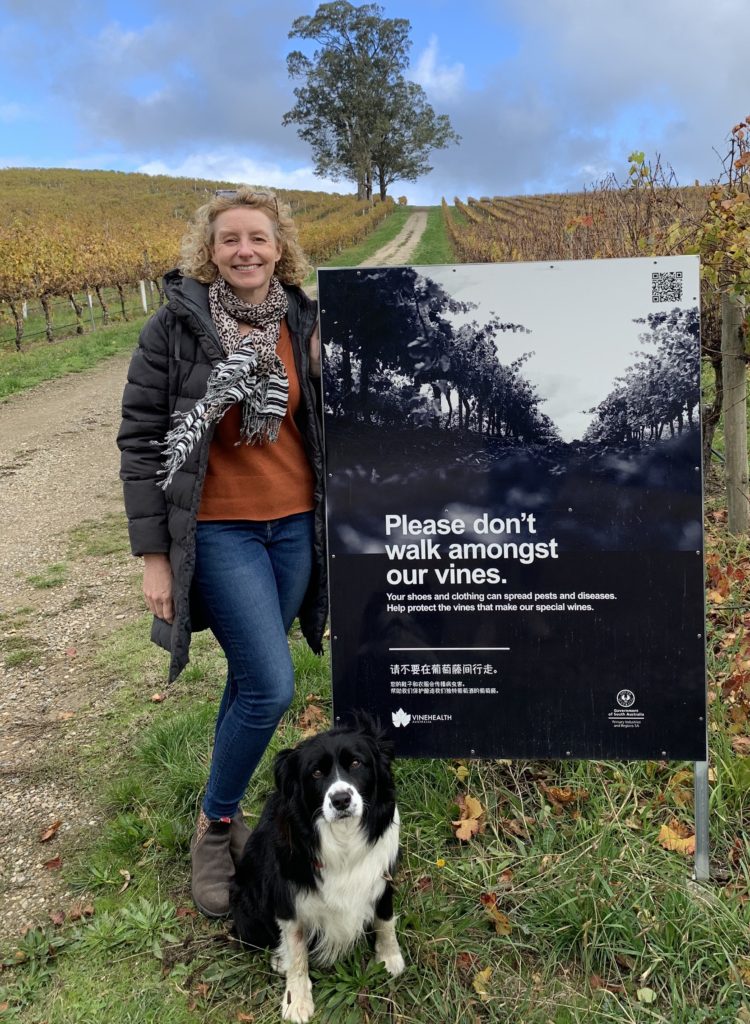
“Since placing the biosecurity signage at our vineyard there has been an increased opportunity for engagement, through conversations with our guests, about the dangers of introducing pests and diseases into the South Australian wine industry. Many visitors are not even aware that this is an issue and that they could unknowingly be part of the problem by taking a walk in our vines. We have found that once guests are empowered with that information they make the right choices. The signage has been a great conversation starter and a tool for spreading greater awareness of the biosecurity issues our industry faces.”
Lucy Golding, Golding Wines, Adelaide Hills
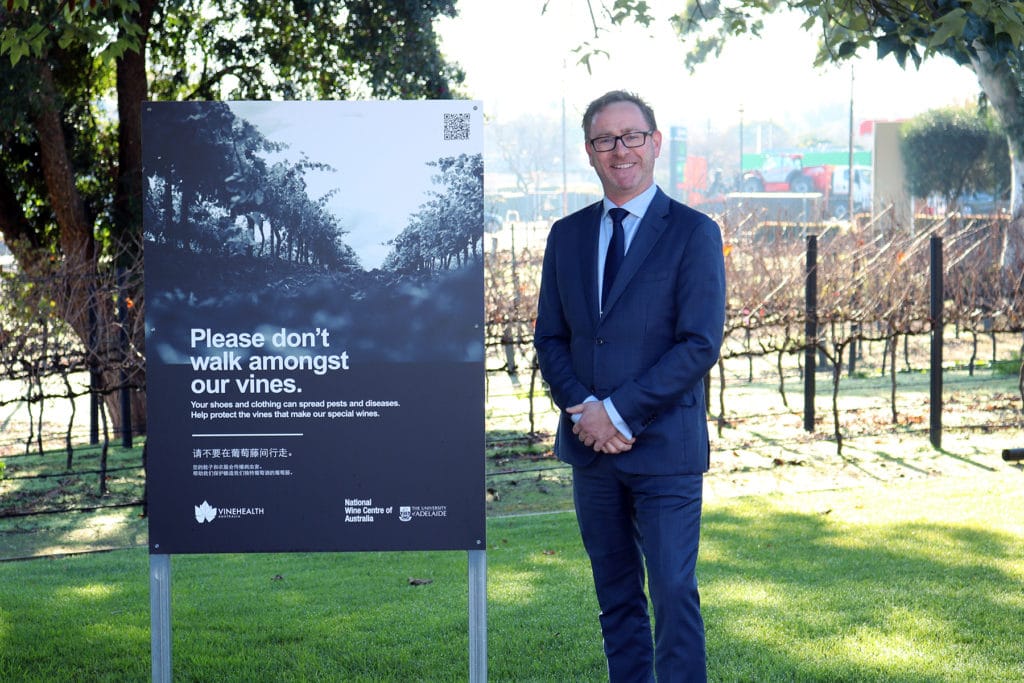
“As a high volume tourism venue, we need to ensure visitors get the message about biosecurity.”
Jason Bird, General Manager, National Wine Centre, South Australia.
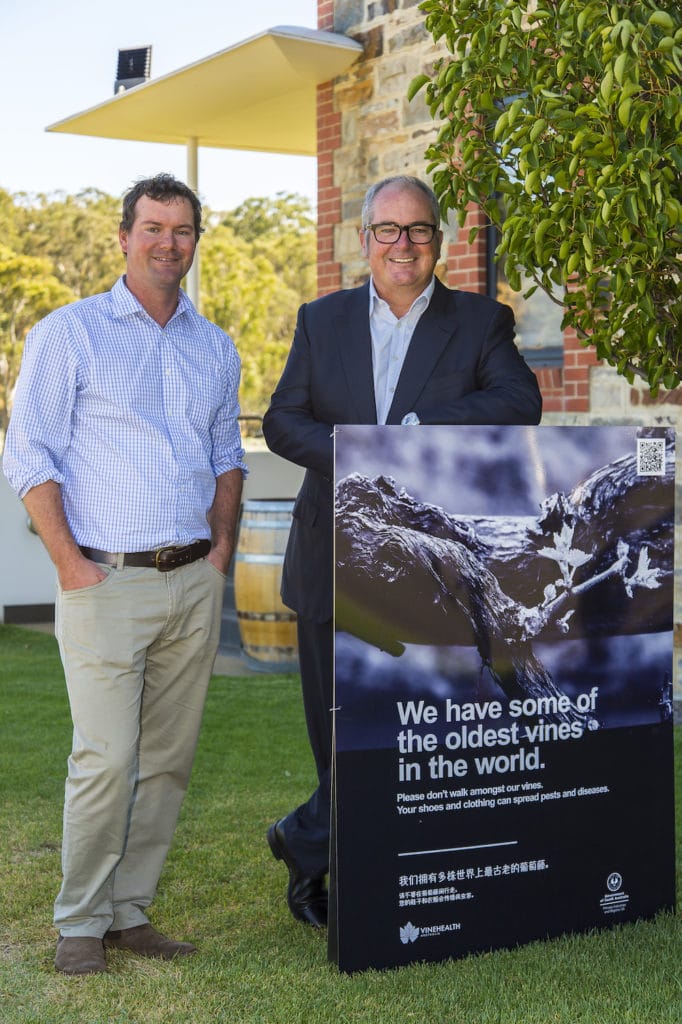
“The Wine Tourism Biosecurity signage program has been very good for our cellar door. The simple yet informative language used is clear and concise and has aided in our team telling the message of biosecurity. It has also helped ensure tourists do not walk amongst our old and treasured vines.“
Richard Angove, Angove Family Winemakers, McLaren Vale
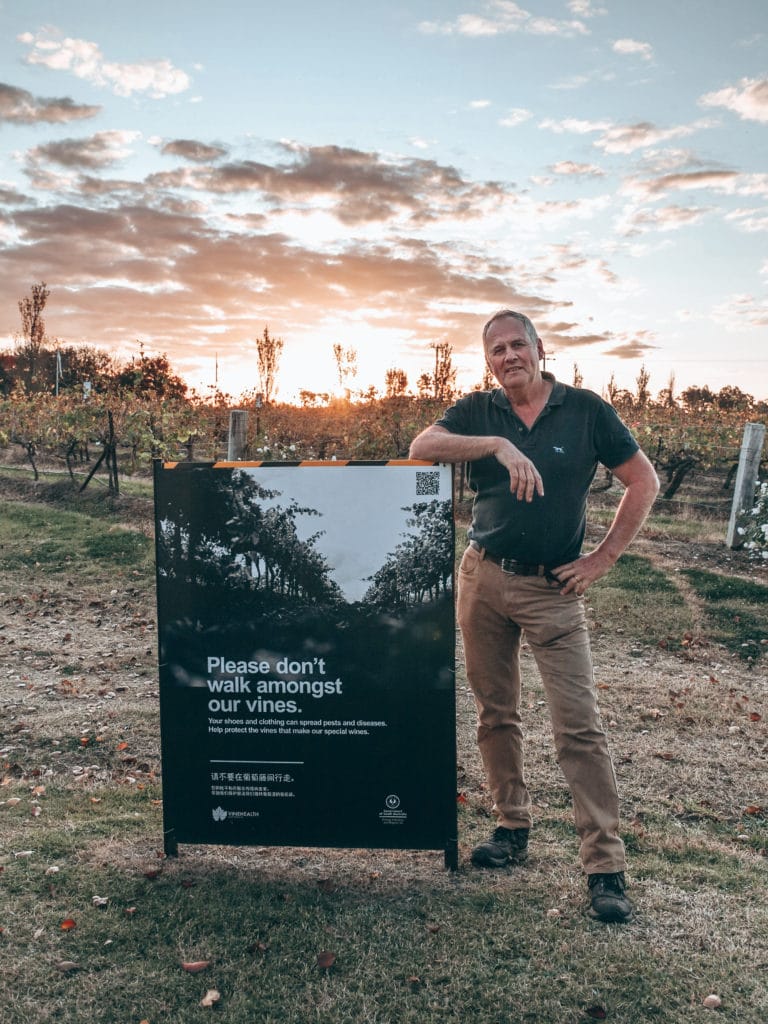
Hunter Valley.
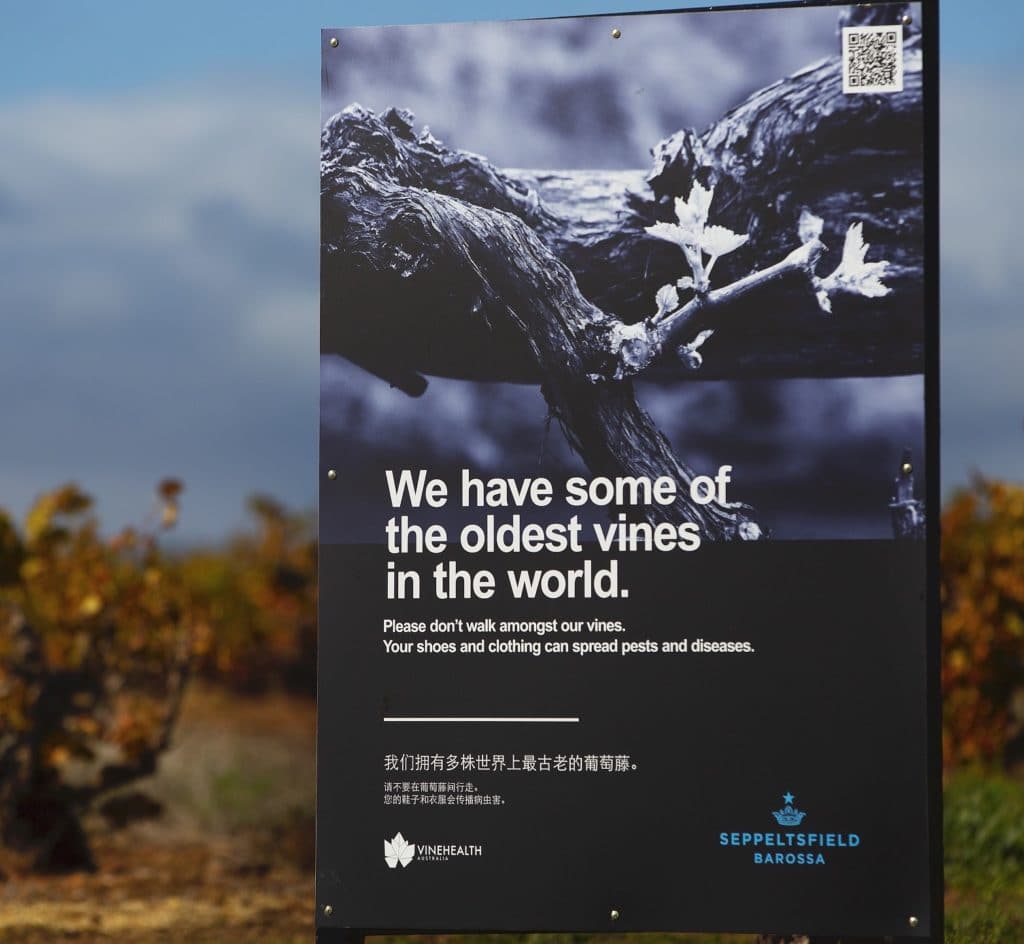
“Our beautiful old bush vine Grenache vineyard at Seppeltsfield is right on the roadside. While it’s wonderful that visitors to the region are be able to see these vines, it’s important for people to also appreciate that walking through them could unknowingly cause damage.”
Nicole Hodgson, Head of Tourism & Stakeholder Relations, Seppeltsfield Wines, Barossa Valley.
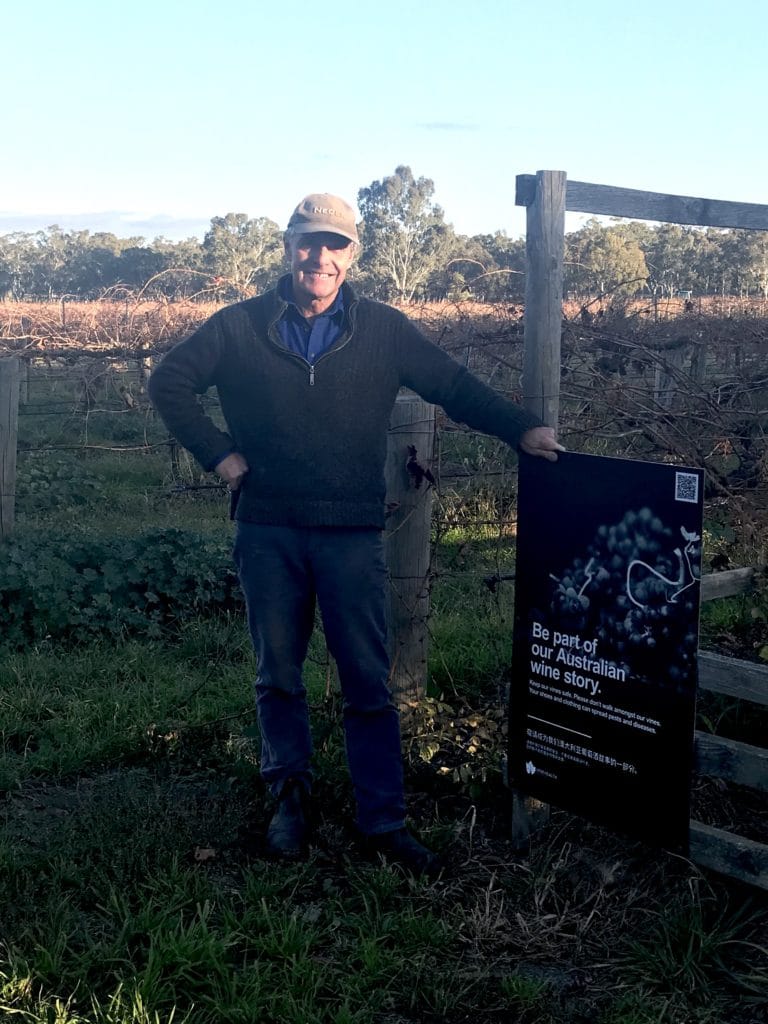
“We are indebted to Vinehealth Australia for being so proactive in the biosecurity space to help protect our most valuable resource, our vineyards. Great Western in Western Victoria was one of the very few Victorian regions spared the phylloxera curse in the late 1890s, and as a result has vines dating back to 1866 (Bests) and 1878 (Grampians Estate). With winery tourism drawing visitors to our regions, it’s so important we educate visitors to the dangers of pests and diseases and that they can be the carriers. Biosecurity is vital for the future prosperity of our region and its individual businesses. Vinehealth should be commended for their work in keeping us safe.”
Tom Guthrie, Winemaker/Owner, Grampians Estate, Victoria.
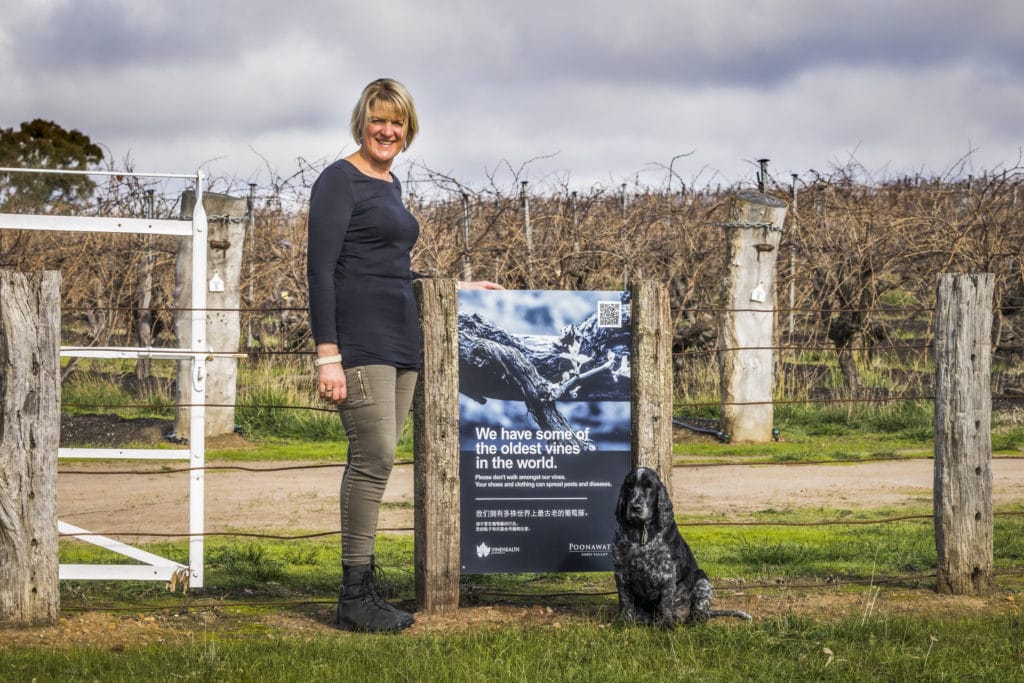
“As custodians of an old vine Shiraz vineyard planted in 1880, we have a responsibility to ensure these ancestor vines survive for generations to come. The Vinehealth biosecurity sign reinforces the need for good hygiene practices to employees and contractors and is a key communication tool in visitor awareness. As the number of Vinehealth signs grows throughout the Barossa, the messaging is reinforced across the region and beyond. It is so important that we protect our viticulture areas – not only are they the economic lifeblood of our rural regions, they are also the home of our old vine assets; living remnants of Australia’s pioneering winemaking heritage.
Michelle Holt, co-owner, Poonawatta, Eden Valley
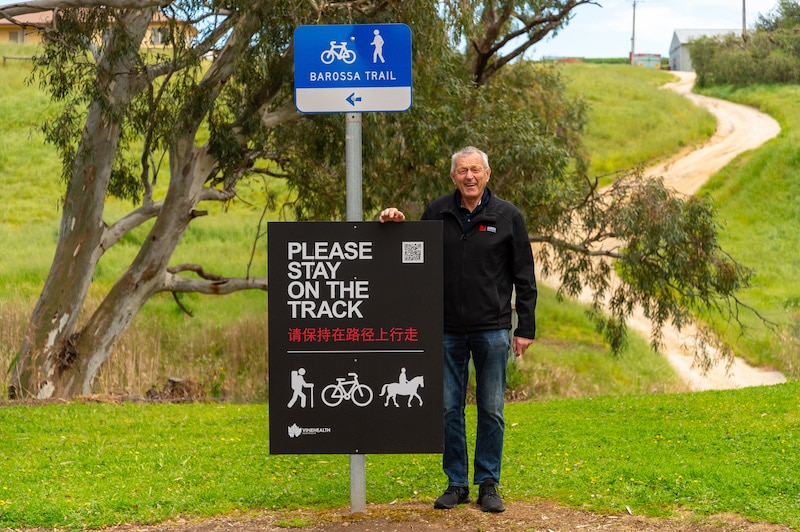
“It’s fundamental to our culture and is a major local employer, not to mention the economic benefits to the region from wine sales and wine tourism. But with any industry comes risk and protecting our beautiful young and old vines from new pests, diseases and weeds is critical. That’s why initiatives to educate visitors about not walking into vineyards are so important. We commend Vinehealth Australia for creating these wine tourism biosecurity signs.”
Barossa Mayor Bim Lange
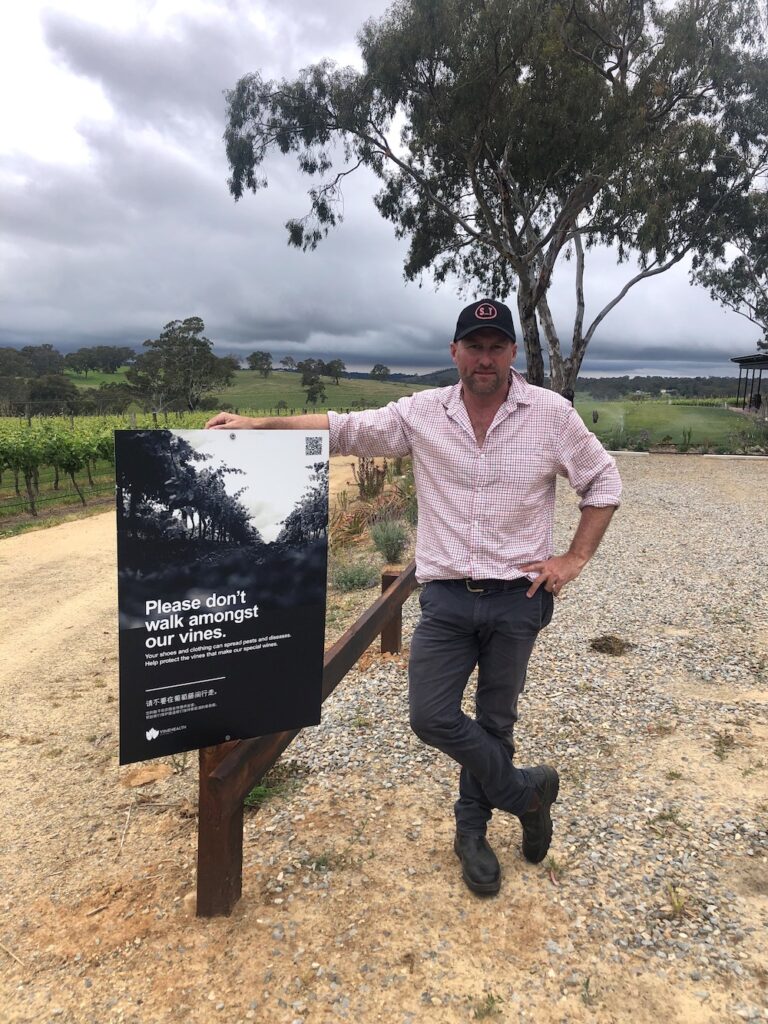
“Being a viticulturist and owner of Simon Tolley Wines, I understand the importance of biosecurity to protect our vines and our brand. I take seriously the control measures to minimise any type of pest impact in South Australia.”
Simon Tolley, Simon Tolley Wines, Adelaide Hills